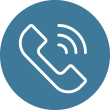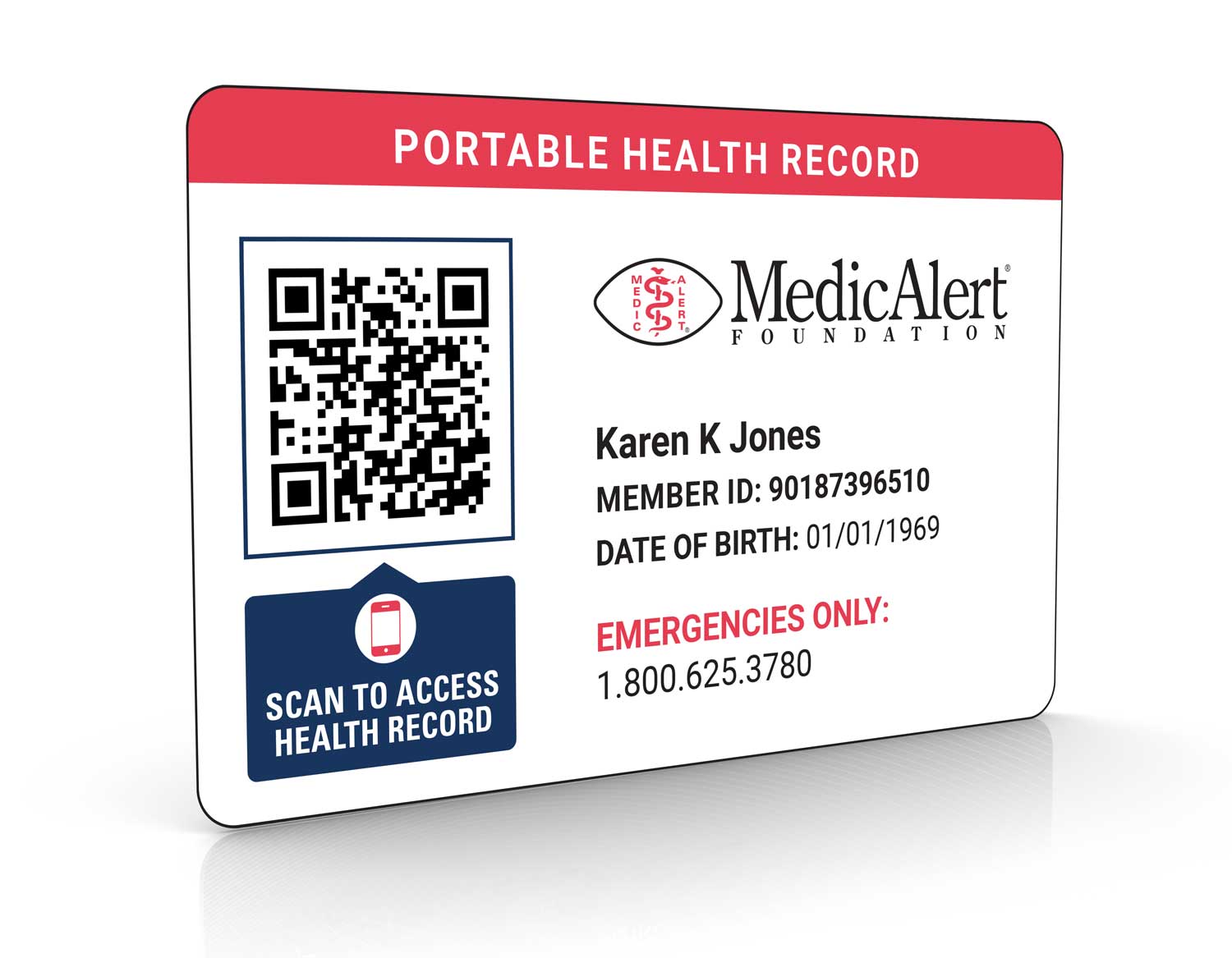I have allergies and suffered a stroke. Being a member of MedicAlert is important to me. When I travel internationally – I have the peace of mind I need. I know that MedicAlert will protect me.
Maryann M., MedicAlert member 1975

Medical IDs for Stroke Survivors
Life after a stroke
In the U.S someone has a stroke every 40 seconds, according to the Centers for Disease Control and Prevention (CDC). That adds up to nearly 800,000 strokes per year. In some cases, a stroke isn’t a one-and-done occurrence. Around one-quarter of all strokes occur in people who have previously had one. Every second counts when a person is having a stroke, which is why medical IDs for stroke can be life-savers for people who previously had a stroke and may be at risk for another.
How MedicAlert protects those looking for peace of mind after surviving stroke
One thing you shouldn’t worry about is what could happen if there’s an emergency. MedicAlert’s protection plans offer benefits that extend beyond the ID, providing safety and peace of mind for stroke survivors, their families and caregivers.

24/7 Emergency Response
Our team provides first responders the information they need to provide fast, accurate care.

Digital Health Profile
All your vital information, all in one place for you and your caregiver.

Emergency Contact Notification
In an emergency, we connect families so that no one is alone in a crisis.

Patient Instructions
Share the information that’s important to your care, such as use of rescue medications or contraindication for tests like MRIs.
Pair a medical ID for stroke survivors with the protection plan that’s right for you.
What is a stroke?
A cerebrovascular accident (CVA), the medical word for a stroke, occurs when blood can’t make its way to the brain. A blood vessel can burst or become blocked by a clot, preventing blood flow. Without the flow of blood, the brain won’t get the oxygen it needs. As a result, some brain cells die.
The effects of a stroke depend in large part on the part of the brain that is affected and the size of the area affected. For example, if blood flow is lost on the left side of the brain, the following can occur:
- Memory loss
- Paralysis on the right side of the body
- Speech problems (aphasia)
If the right side of the brain is affected, the following can occur:
- Memory loss
- Paralysis on the left side of the body
- Vision problems
In some cases, a stroke can affect the brain stem, leading to a condition known as “locked-in syndrome.” A stroke that occurs in the brain stem affects both sides of the body, generally leading to full paralysis from the neck down.
Some people can regain use of their limbs, speech or vision after a stroke, but not everyone does.
Types of strokes
The type of damage to a blood vessel determines the type of stroke a person experiences. The most common stroke type is an ischemic stroke. Around 87% of strokes are ischemic, meaning that a clot has formed in a vessel, blocking blood flow.
Hemorrhagic strokes occur when a blood vessel becomes weak and bursts, causing bleeding in the brain. An aneurysm is an example of a hemorrhagic stroke. High blood pressure is a common cause of this type of CVA.
TIA is the abbreviation for a mini stroke, or a transient ischemic attack. A TIA occurs when a person develops a temporary clot. A TIA can be a warning sign that an ischemic stroke is about to occur. If you’ve had a TIA, it’s a good idea to get a medical ID for stroke or other stroke awareness jewelry in case a full-blown stroke occurs in the future.
What are some symptoms of a stroke?
Knowing the signs of a stroke means that you can act quickly if you experience them or if you notice them in someone else. The symptoms often come on suddenly. Common signs of a stroke include:
- Numbness or weakness, often on one side of the body
- Severe headache that doesn’t have a known cause
- Dizziness, loss of balance or trouble walking
- Difficulty seeing in one or both eyes
- Difficulty speaking or understanding speech
Time is of the essence when a person is having a stroke. The CDC recommends using the acronym F.A.S.T. to help you identify stroke symptoms and to remind you to move quickly to get help:
- F: Look at the face of the person. Tell them to smile. If they are having a stroke, the mouth might droop to one side.
- A: Ask the person to raise both arms. Arm weakness, such as not being able to lift one arm all the way, or numbness is a possible sign of a stroke.
- S: Listen to the person’s speech. Is it slurred or slow? Ask them to say something. If they can’t talk or if the speech is slurred, get help ASAP.
- T: The “T” in FAST stands for time. As in, now is the time to call 911 if you see any of the three signs above.
This is where a medical ID for stroke survivors comes in to help ensure you get medical attention when time is of the essence.
What to engrave on MedicAlert medical IDs for stroke survivors:
MedicAlert offers free custom engraving on all our stroke bracelets and medical ID products. The engraving on your medical ID for stroke survivors should include any critical medical information that can protect and save your life if you are in an accident or have a medical emergency, for example:
- History of stroke
- Medications you’re taking
- Allergies
- Implanted devices
- Any additonal medical information that needs to be communicated to first responders

Sample engraving. Consult our team if you need help engraving your medical ID for stroke survivors.
Who is at risk for a stroke?
Some people have a higher risk for a stroke than others. Having high blood pressure, heart disease or high cholesterol all raise your stroke risk. Diabetes and sickle cell disease also increase stroke risk, according to the CDC. If you have any of those conditions, you might consider wearing a stroke alert bracelet in case of emergency.
The risk of stroke is also higher in those who have previously had a CVA or a TIA. Several factors further increase stroke risk among people who have had a stroke in the past:
- Being over 80 years old
- Having a family history of stroke
- Being male
- Being African American.
Often, what caused the first stroke, such as high blood pressure, also causes a second stroke. If you’ve had a stroke before, you can work with your doctor to manage any conditions that contributed to it or to make lifestyle changes to reduce your risk of a second stroke.
Some ways to minimize the risk of a second stroke include losing weight, quitting smoking, exercising more, and getting conditions such as diabetes, high blood pressure or high cholesterol under control.
As with any medical condition, you should consult your doctor for specific instructions on managing your condition.

The American Stroke Association is dedicated to helping those have experienced strokes. They advocate, provide support and a supportive community to enhance lives. Learn more here:
Do I need a medical ID if I had a stroke?
If you have previously had a stroke, or are at risk for a stroke due to medical conditions like heart disease, high blood pressure or diabetes, you will benefit from wearing a medical ID.
In the event of a recurrent ischemic stroke, a MedicAlert bracelet or other accessories for stroke patients could save your life. Your stroke bracelet can provide onlookers or emergency medical teams with essential information about your medical history. Having that information allows people to get you the help you need, quickly.
How medical IDs for stroke combined with MedicAlert Membership provide assurance in emergencies
- We’re your voice: If you can’t speak for yourself due to a stroke or other medical emergency, your ID will speak for you – informing others about your past stroke(s) and any medications you’re taking.
- 24/7 emergency protection: In an emergency, the MedicAlert team will relay all of your critical medical information to first responders, no matter where or when your emergency happens.
- Always connected: You should never be alone in an emergency. That’s why MedicAlert will reach out to your designated contacts if you are unable to do so.
- Live with peace of mind and confidence: MedicAlert will be there for you every step of the way. You’ll have the confidence and freedom to live your life as a stroke survivor, knowing we’ve got you covered.
DISCLAIMER: THIS WEBSITE DOES NOT PROVIDE MEDICAL ADVICE. The information in this article is presented for educational purposes only and is not intended as a substitute for professional medical advice, diagnosis and treatment. Always seek the advice of a physician or other qualified healthcare provider for any questions you may have regarding a medical condition or treatment.







